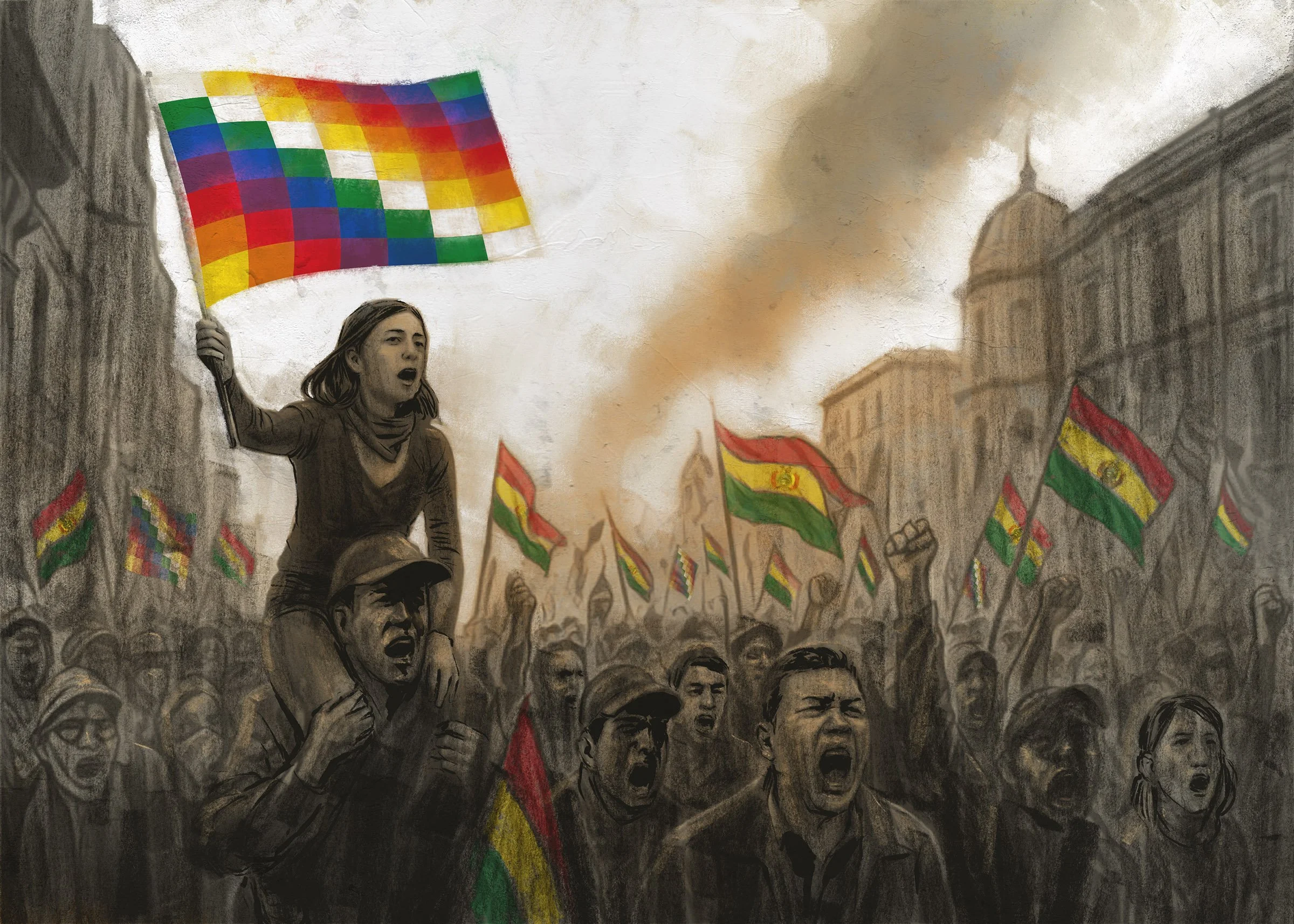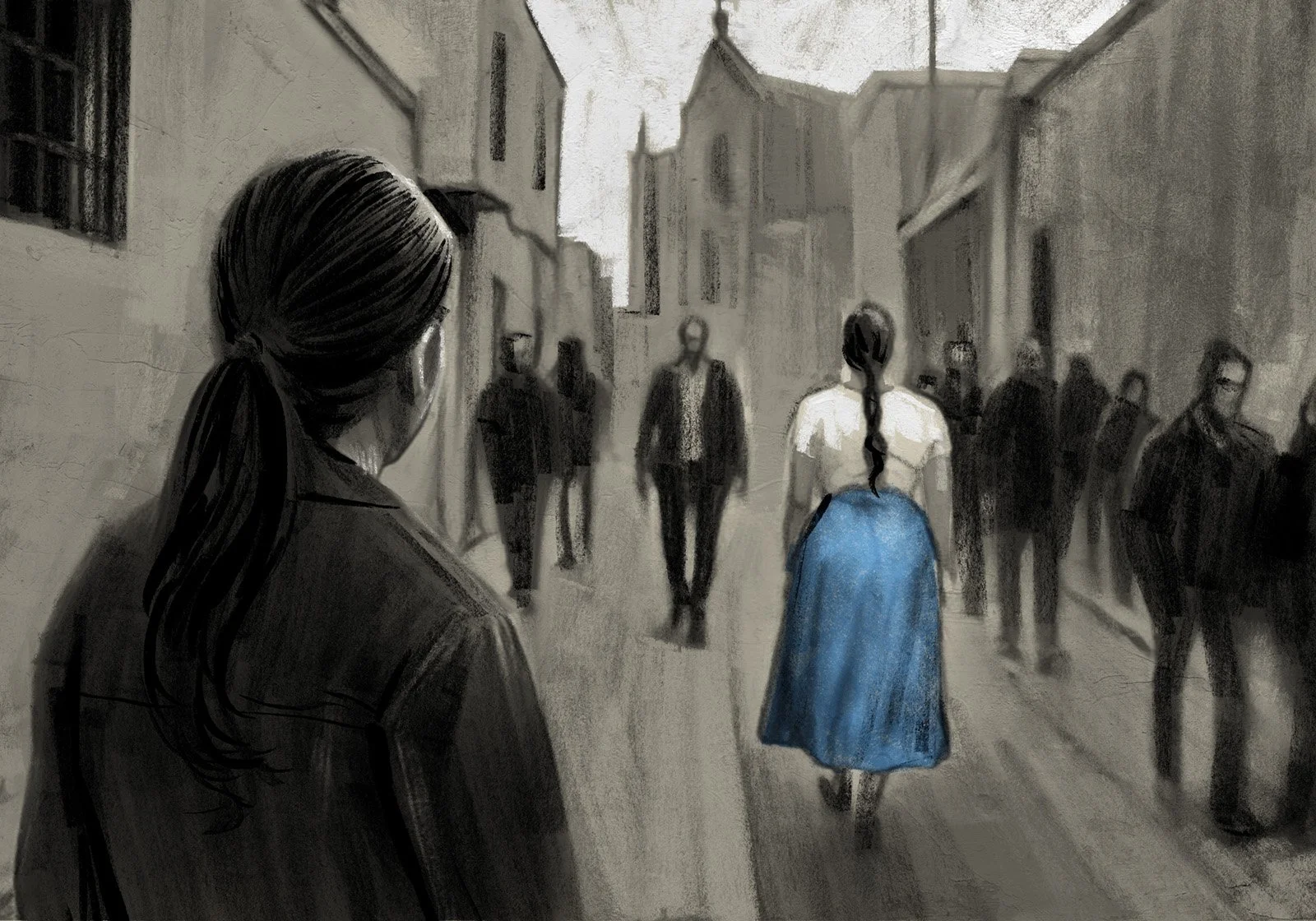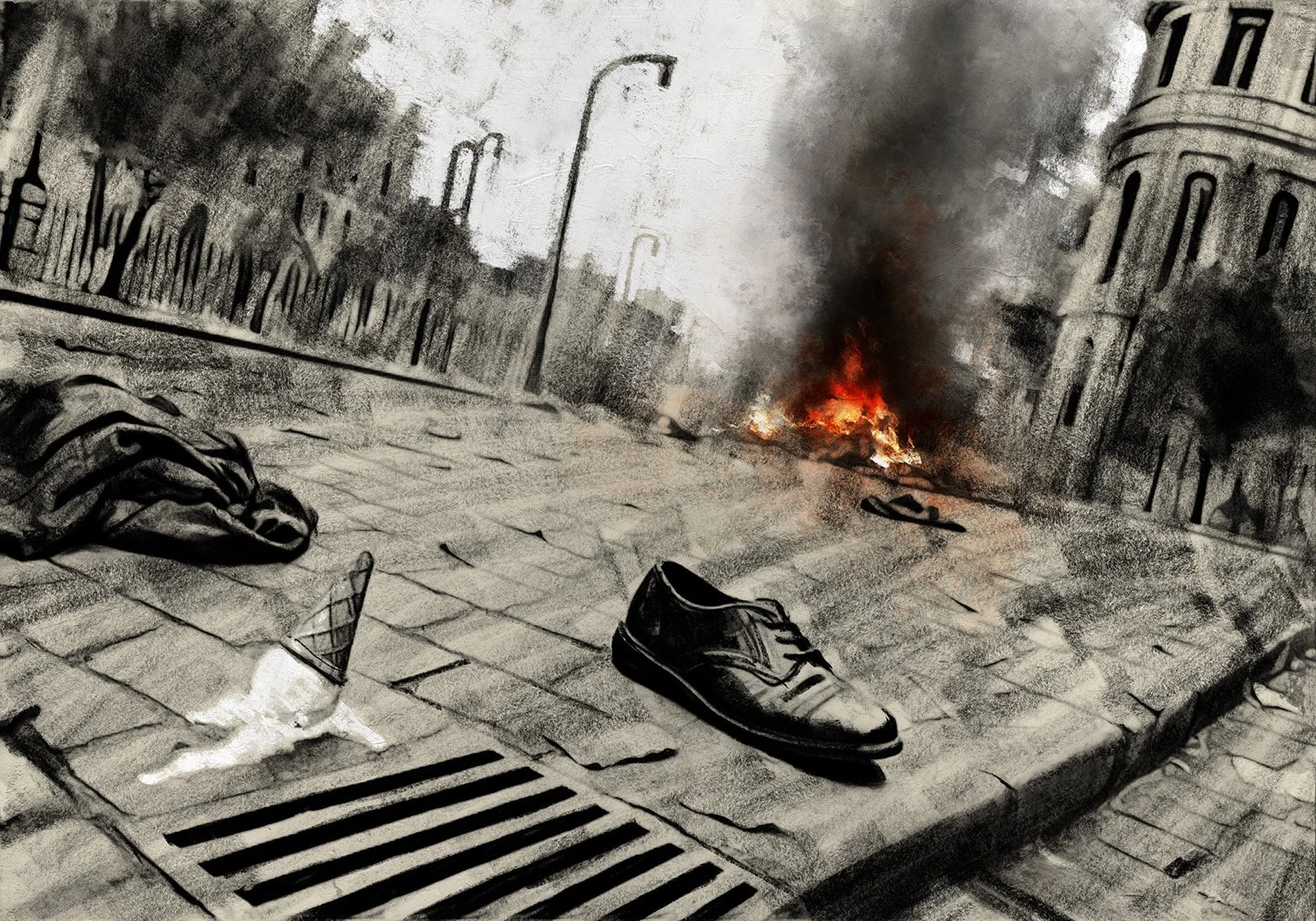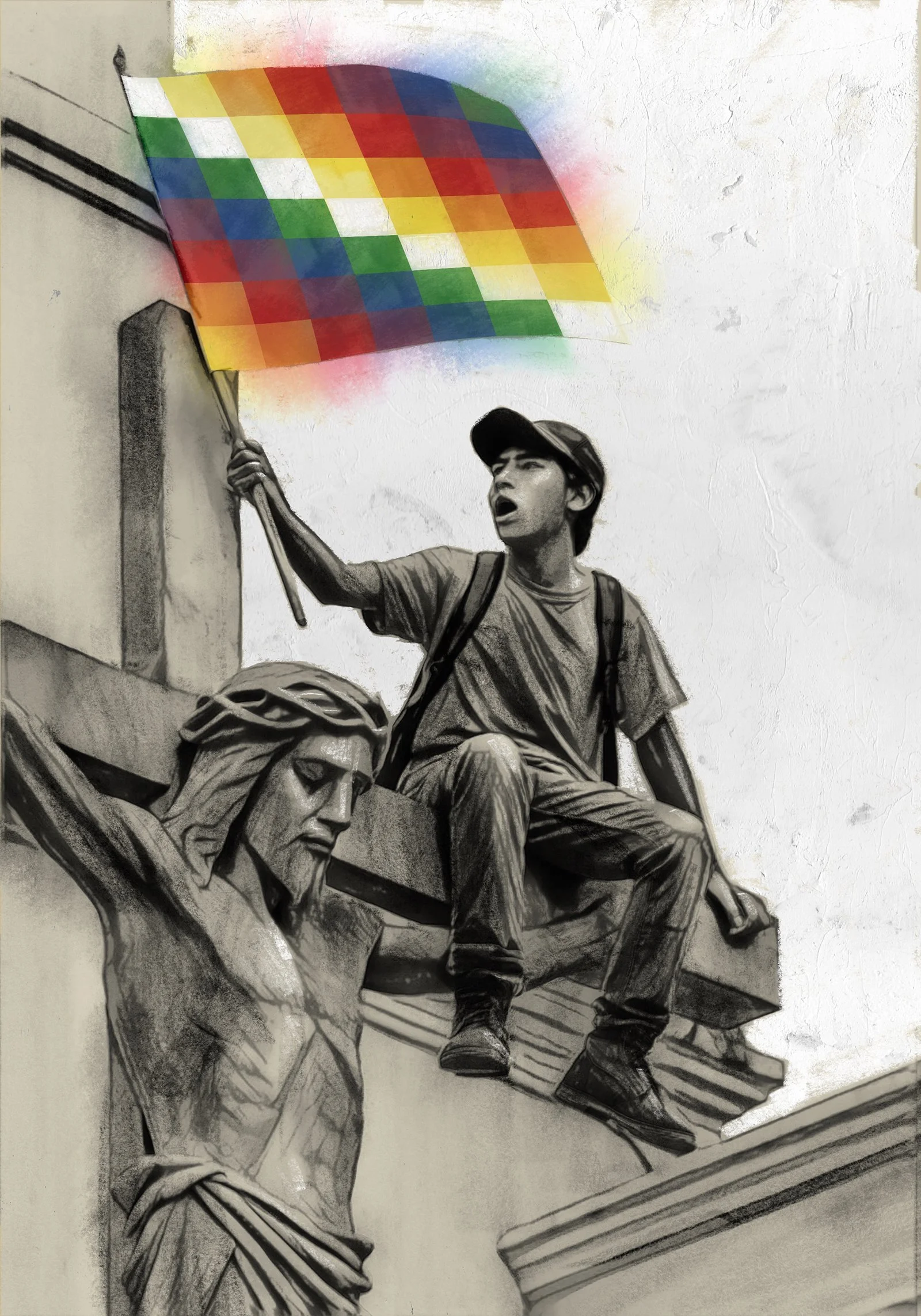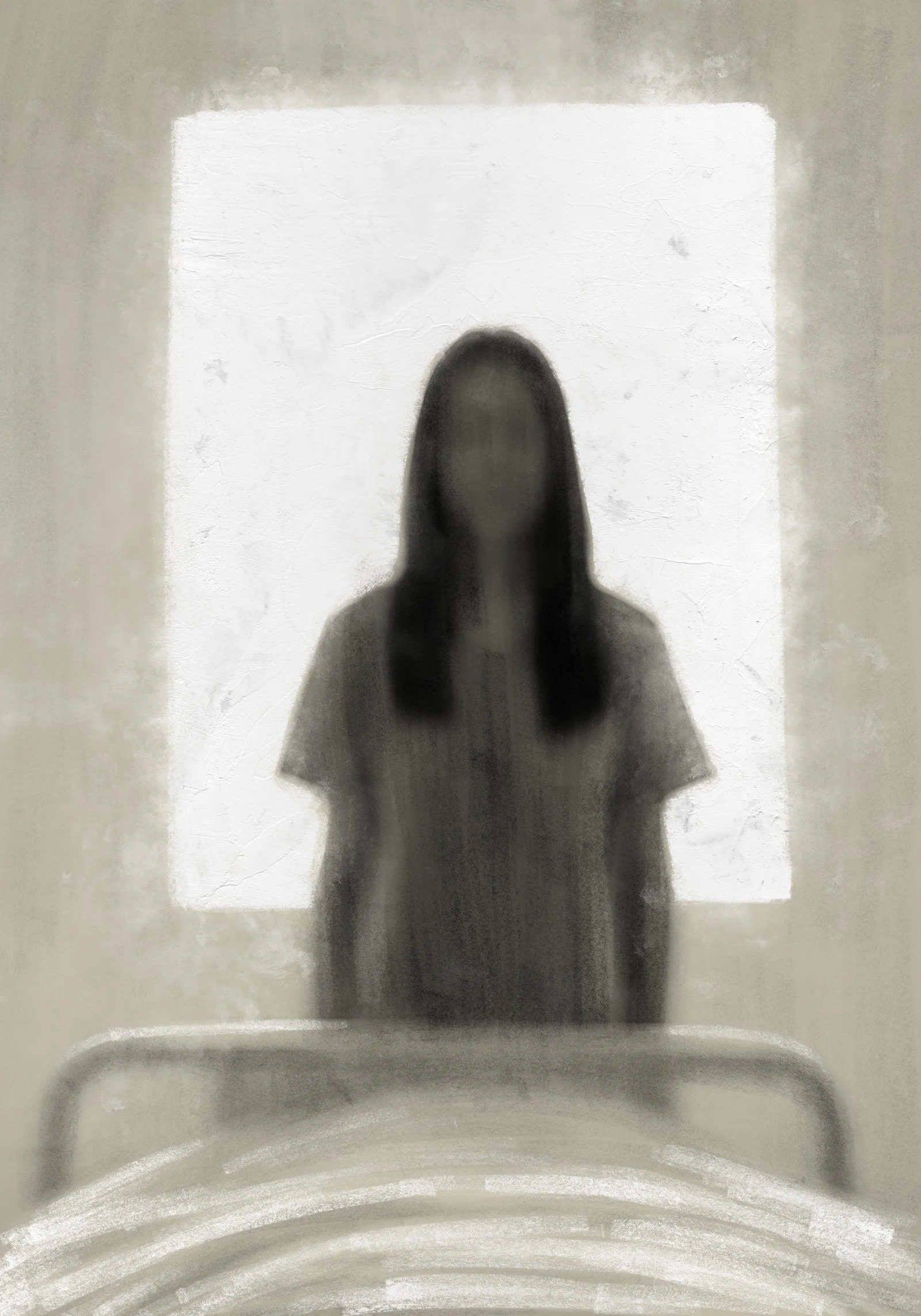It took me about five minutes to move just a few feet from the middle of the block toward the next intersection. From that corner, with a view that extended toward Plaza Colón in one direction and to the statue of Cristóbal Colón in the opposite one, the real magnitude of the march finally became clear: There were thousands of people heading in my direction. On the TV news, those people might have described them as rivers of protesters climbing over the roofs of parked cars, looters preying on the chaos who’d later get blamed for toppling the cast iron statue after detaching it from its base. I could see my old school, the Escuela Sagrado Corazón de Jesús, its main entrance boarded up with plywood, and I imagined the tormented sisters stuck inside it like prisoners. One of the protesters, a guy about my age, had scaled the stone statue of Jesus on the crucifix in front of the school building and sat awkwardly on the cross, waving a colorful wiphala flag.
Whenever I tried taking a step in the hospital’s direction, the mass of protesters pushed me right back to my original spot. My heart was now beating harder with a stinging mix of fear and anticipation, like I knew I was living through something that was about to unravel. I needed to make myself as unobtrusive as possible. I took a deep breath and stood still, my body flat against one of the boarded-up entrances to a store where the marchers kept bumping into me. Finally, in that relative quiet, I realized that it was going to be near impossible to find my way to the hospital to see my grandmother, or even, to get back to the plaza where Suyay and I had planned to meet.
Banners and rainbow wiphala flags hung from the tree branches in the plaza and along the power lines and balconies along Avenida Sagrado Corazón de Jesús. Even the typically graceful bell tower swallows seemed to be responding erratically to all the chaos, flying low and in circles around the plaza like bats emerging at dusk out of their caves. I put my right hand on my chest to count my heartbeats. I watched the birds and the crowds swelling and flowing slowly by.
Kutimusaqtaqmi millonnintin runakunañataqmi kasaq!
The chants came softly at first, as if the protesters were saying the words only to themselves. Kutimusaqtaqmi millonnintin runakunañataqmi kasaq!
I heard them from about a block away, but this time in Spanish.
Volveré y seré millones!
I’ll be back and I’ll be millions!
Like a call and response, the chants kept growing louder each time, over and over again, until it hit me: Those had been the famous dying words of 27-year-old Túpac Amaru, the Inca warrior who’d led one of the last Indigenous rebellions against the Spaniards. Go ahead, kill me, he’d allegedly told his captors. Kill me, but my descendants will come back with great force. In the end, the Spaniards not only did kill him but they made a spectacle of it, beheading Túpac Amaru in front of a towering cathedral similar to Nueva Roa’s, facing a crowd of 15,000 people.
